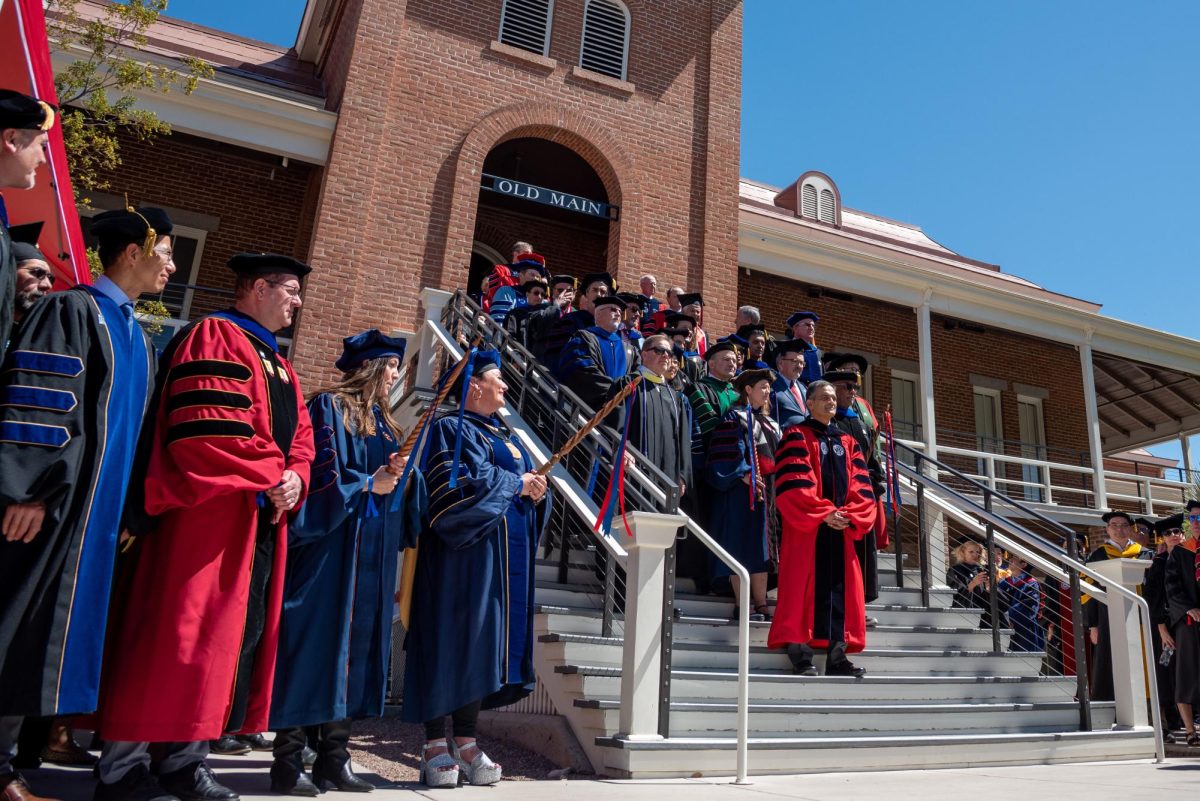A study conducted with the Mel & Enid Zuckerman College of Public Health will help develop questions to improve current methods for assessing swimmers’ exposures to harmful microbes and chemicals in swimming pools.
Kelly Reynolds, an associate professor in the College of Public Health, is leading the study after receiving a $65,459 grant from the National Swimming Pool Foundation last October to help improve current swimming pool testing methods through the development of new questionnaires for researchers.
“We’re basically developing a survey that can be used both in advance in monitoring how the pools are doing, as well as in response to an outbreak that has been identified,” said Kacey Ernst, an assistant professor in the college and a collaborator on the study.
Current surveys do not focus on certain factors such as the amount of time spent in the water, the amount of water ingested or how chemicals are mixed, Reynolds said. To remedy this, Reynolds will administer questionnaires to pool users and operators in order to create an improved survey.
“Part of the study is improving the current questionnaire that the CDC (Centers for Disease Control and Prevention) uses during outbreaks to evaluate swimmers’ exposure and part of it is validating what we find in the observational assessment,” Reynolds said.
Although there are no established sites yet, water testing will begin in the summer and will focus on public pools in Tucson. Because Arizona has the most swimming pools per capita in the nation, the study will especially benefit the state, Reynolds said.
“There shouldn’t be a worry in a properly maintained pool, but what we’re finding is that a lot of pool operators, because they’re worried about bacteria, are overdosing the chlorine,” Reynolds said. “With mass amounts of chlorine you (swimmers) can experience skin, eye and respiratory tract irritations due to chemical exposures.”
Reynolds will work with Ernst, Charles Gerba, a professor in the Soil, Water and Environmental Science department and Laura Suppes, a graduate student in the same department. Their goal will be to create a survey tool accessible to people at the state level and at the federal level, Ernst said.
“I think it’s good to keep track of how much chlorine you’re putting in the water,” said Monique Trejo, a pre-elementary education freshman and an active swimmer. “I’m usually in the water for about an hour, and if it’s not chlorinated enough or too much I could get sick, or anyone can get sick.”
Researchers will try to find the right balance to control the bacteria, without adding too much chlorine, since people can have adverse respiratory effects from breathing in the chemical, Reynolds said.
At the Student Recreation Center’s pool, lifeguards check the chlorine levels every hour and add tablets to the main pump that filters out to the entire pool, said Brandon Recker, a Rec Center lifeguard and a senior studying public management and policy.
Not only do lifeguards check the pool water to ensure it is safe, but maintenance also checks the chemical content of the water throughout the day, Recker said. The Rec Center has not been contacted about possible testing, but there is an interest in testing its pool water, Reynolds said.
The yearlong study will try to develop an understanding of how much of each chemical needs to be added to balance controlling microbes with minimizing health effects, especially with over-chlorination, Reynolds said.
“I think (water testing) is an important topic, especially living in Arizona,” said Mari Hanchar, a family studies junior and a swimmer at the Rec Center. “A lot of people come here to swim and I think it’s important that it’s safe for everybody.”








